Quite often, snake plants can be seen in office spaces and homes. Often people are faced with the fact that the leaf plates begin to turn yellow. You can read more about the snake plant’s yellow leaf in this article.

Why snake plant turning yellow?
There are several reasons for yellow snake plant leaves. If you wonder why is my snake plant leaves turning yellow, pay attention to a few points, among which:
- wrong watering;
- direct contact with ultraviolet;
- the rot of the root system;
- abrupt temperature change;
- fungal infections;
- pests;
- poor quality of drainage;
- deficiency or excess of fertilizers;
- natural aging.
More details about all the reasons will be discussed below.
Wrong watering of the snake plant
The snake plant is unpretentious in its care, and it is quite difficult to get rid of it. This is the best solution for people who do not have the opportunity to spend a lot of time caring for plants. The snake plant is considered a succulent and can accumulate moisture in the leaf plates.
Many mistakenly think that succulents can easily tolerate drought.
However, you cannot completely abandon their watering. If you do not provide snake plants with adequate watering, they will soon show signs of distress. If you notice yellow snake plant leaves, then the reason may lie in the lack of water.
Watering should be such that the soil is moist. The snake plant should not be flooded. There should be an interval between watering so that the soil has time to dry out. If you water the flowers too much, the snake plant turning yellow.
If you make a mistake and pour in too much water, then you should make a fairly large interval between watering so that the soil is completely dry. Only after that, it is possible to proceed to the already correct system.
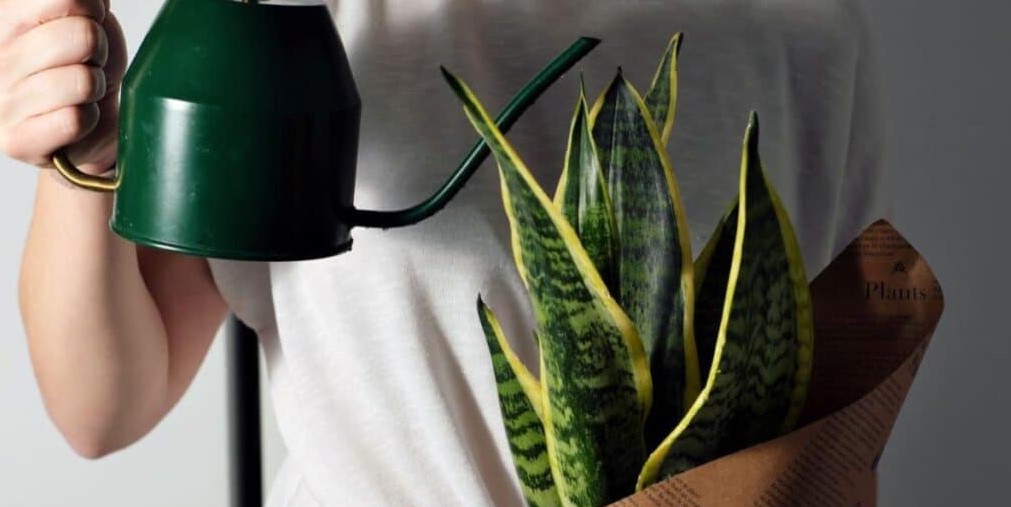
Root rot of the snake plant
Often, yellow snake plant leaves indicate that the flower has been affected by root rot. It occurs due to excess moisture. Often, snake plants die due to this disease. If you notice signs of root rot, take the snake plant out of the pot and check the roots.
If they have already become mushy or black, then there is root rot. If you have confirmed root rot, you should cut off all the affected areas, and transplant them into fresh soil.
Excessive direct sunlight of the snake plant
It is not uncommon for snake plants to turn yellow if they stand in an open area where is too much direct sunlight penetrates. They prefer indirect sunlight.
If the snake plant turning yellow, you can temporarily move the plant to a more shaded area of the room where direct sunlight does not penetrate.
If after a few days the situation with turn yellow leaves has not returned to normal, you should look for a more shaded place without direct sunlight, or try to determine another reason.

Snake plant leaves turning yellow because of sharp temperature change
Snake plants are often found in tropical climates and love warmth. For them, the optimum temperature is 50-80 °F. If the decrease or increase in temperature is too sharp, the snake plant leaves will begin to turn yellow.
If you notice a similar phenomenon, try to normalize the temperature in the house. Protect snake plants from drafts, so do not place them on windows or near doors.
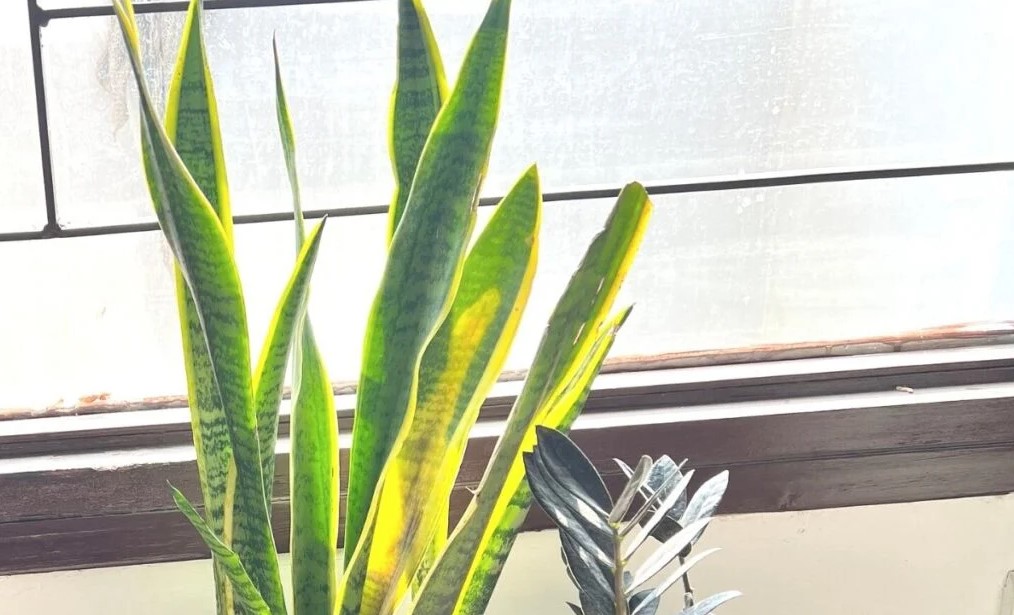
Fungal infections of the snake plant
Often, the yellowness of the snake plant leaves indicates that the snake plant has been affected by a fungal infection. They can occur for various reasons, including intensive watering, poor drainage quality, etc. Treatment should begin with improving the growing conditions for the flower.
Keep the soil moist and allow the snake plant to ventilate. It is allowed to use fungicides that are aimed at the destruction of the fungus. They must be used according to the instructions on the package. Otherwise, you can further harm the plant.
Snake plant leaves turning yellow because of pests
The yellowness of the leaves of a snake plant can be caused by pests.
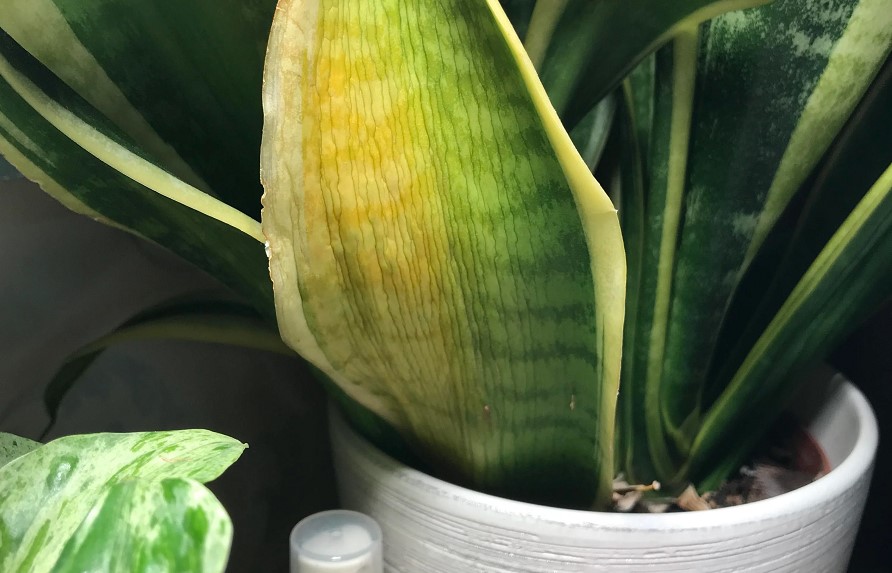
Mealybugs
These insects are distinguished by a white tint and feed on the juice contained in the leaves. Therefore, they first provoke the yellowing of the snake plant leaves, after which they can completely kill the culture.
If the presence of such a pest is suspected, an insecticidal soap or garden oil should be used for treatment.
In the product, you need to moisten a cotton pad, which wipes all the affected surfaces.
Spider mites
These are too small insects that are difficult to notice. They feed on snake plant leaves. If you try to find them, you should inspect the underside of the leaf plates. It is recommended to fight spider mites with garden oil or insecticidal soap.
Aphid
This pest is compact in size and green in color. It feeds on snake plant sap. They appear in large groups, so in a short period, they can provoke the yellowing of all the snake plant leaves.
You can fight aphids using the same methods as in the previous options. You can also try to remove them with your hands, or knock them down with a jet of water that comes from a hose.
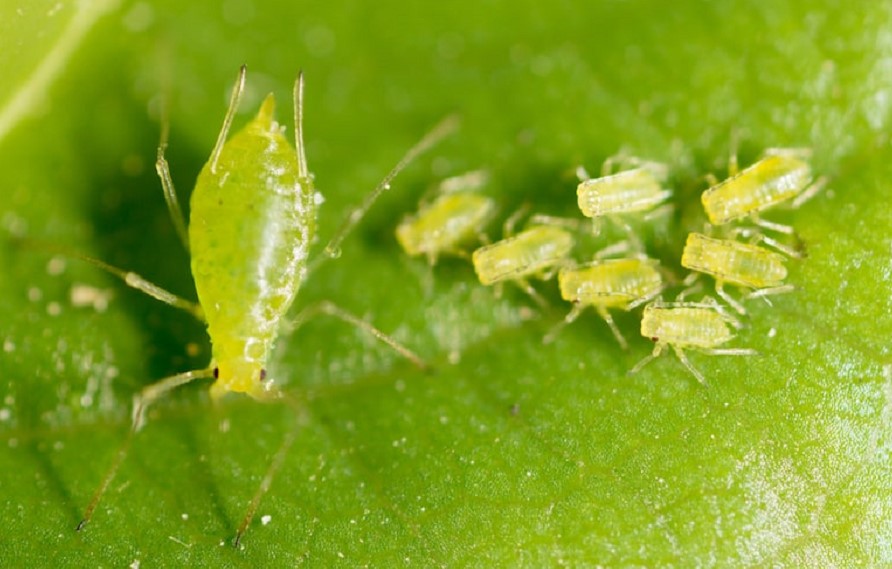
Snake plant leaves turning yellow because of nutrient deficiency
Quite often, snake plants do not receive enough nutrients. In most cases, yellow leaves indicate that the snake plant needs nitrogen. Often because of this, the growth of the snake plant stops.
You can correct the situation if you apply fertilizers with high nitrogen content. This will normalize growth, as well as restore the pigment of the leaf plates. It is important to monitor the pH of the soil. If the acidity falls or rises, the snake plant lacks nutrients.
Snake plant leaf turning yellow because of grown roots or lack of space
Quite often, yellow leaves indicate that the snake plants do not have enough space in the pot, or that the roots have grown too large and have begun to intertwine. In the second case, the roots surround the pot and begin to get confused. Because of this, not only do the leaves turn yellow. The growth of the snake plant may completely stop, or it will die.
If there is a suspicion that the roots are tangled, they should be removed from the pot and inspected well. It may be necessary to transplant the snake plant into a larger pot. Before planting, you should slightly loosen the roots, and water at the end of the procedure.
Given that the snake plants are constantly evolving, be prepared for the need to constantly report them. After all, some pots may no longer be enough. If you transplant it, the snake plant will soon return to its original form.

Snake plant leaves turning yellow because of poor drainage
It is not uncommon for yellow leaves to appear on a snake plant if you have prepared poor-quality drainage. Snake plants need excellent drainage, which ensures the prosperity of the snake plant.
Snake plants need high-quality drainage. If the soil is too dense, the roots may begin to rot. If you suspect low-quality drainage is the problem, you can report the snake plant in another container that has more drainage holes. It is allowed to add sand or perlite to the soil.
These components allow moisture to pass through, so it is not stagnating. If you do everything right, the snake plant will soon recover.
Snake plant leaves turning yellow because of too much fertilizer
It is not uncommon for a snake plant to turn yellow if you apply excessive amounts of fertilizer. If you make the components correctly, according to the instructions, the culture will develop correctly, and there will be no problems with development. If you have begun to notice the yellowness of the snake plant leaves, analyze your recent actions.
You may have applied too much fertilizer. If the situation is not normalized immediately, the snake plant leaves will fall off, and the snake plant may die altogether.
Snake plants do not need to be fed in large quantities. Some gardeners believe that fertilizers can be completely abandoned. If you decide to apply nutrients, this should be done at intervals of 1 month, when the vegetation process occurs. Namely, only in spring and summer.
For top dressing, you need to use fertilizers that are diluted to half the concentration that is written on the label. This prevents the yellowing of the leaf plates. You cannot fertilize in winter because the snake plant goes into a dormant state. Therefore, they do not need nutritional components.
If you think you have added too many nutrients, stop adding them for a while. Also, rinse the soil with plenty of clean water. This helps flush out excess fertilizer. You can also transplant the snake plant into the new soil.
If everything is done correctly, the snake plant will soon recover. Therefore, the yellow leaves will soon turn green again.

Natural aging process
Often, snake plants turn yellow leaves because this is the natural aging of the flower. As you know, the older the snake plant, the more abundant yellow patches appear on it.
Over time, they may even turn brown. You should not panic in such a situation because this is the life cycle of a plant, and this is the norm.
Once the snake plant leaves turn brown, they will eventually fall off. New, healthy, and green leafy plates will grow in their place. If you begin to notice the yellowness of the leaves, you do not need to immediately panic. Watch the bushes. If the leaves turn brown and fall off, leave them as it is.
How to prevent the yellowing snake plant leaves?
As you know, any problems are better to prevent than after dealing with them. Especially if you are growing snake plants.
Plant in soil with good drainage
It is important to make sure that snake plants are planted in well-drained soil. This is a rather important parameter on which the prosperity of the bushes depends. If the soil is too dense, as already mentioned, this can cause root rot.
Because of this, it’s not just the leaves that turn yellow. Root rot can cause the snake plant to die. Try to plant in light soil that has excellent drainage. You can prepare the mixture yourself, or buy ready-made options. The best choice would be mixtures for planting cacti.
You can additionally saturate the soil with perlite or sand. This will promote better drainage.
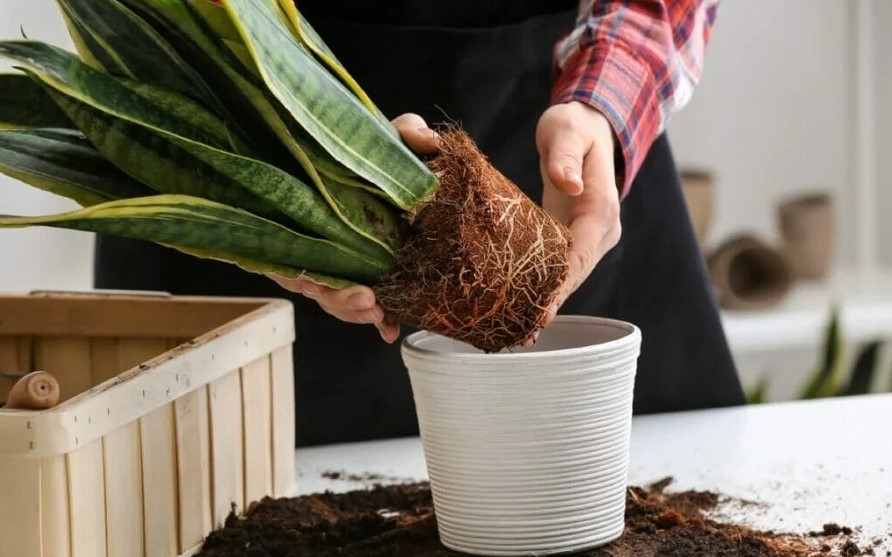
Proper watering
Plants should not be overwatered. Snake plants can retain moisture in their leaves for a long time. Therefore, they do not need frequent watering. If you overwater your snake plants, they may start to rot. Watering should only be done when the soil is already dry.
Don’t overdo fertilizers
As already mentioned, an excessive amount of fertilizer can cause the leaves to turn yellow and the bush to die. Therefore, you risk causing additional damage to snake plants. Try to fertilize at least 30 days apart when the growing season starts. You need to use diluted fertilizers.
Bright light protection
Snake plants need good lighting. However, they prefer to stand in a place where bright diffused light prevails. Lack of light can provoke the yellowness of leaf plates. In the same way, direct rays can harm the plant. That is why you should choose the right place.
Correct temperature
The snake plant must grow in the right conditions. Air temperature deserves special attention. It should be between 50 and 80 degrees Fahrenheit. In hot or cold weather, the plant leaves may turn yellow.
If you follow the recommendations described earlier, you can prevent the appearance of the yellow snake plant. If the problem has already appeared, you should determine the cause and try to correct the situation. Only in this way, the plant will delight you with its beauty.

FAQ
When growing snake plants, gardeners may face a variety of issues. The answers to the most common of them will be described below.
Why do leaves become soft?
If you notice that the snake plant is covered with soft leaves, then you watered them abundantly. It is in the leaf plates that the accumulated water is stored. If you overdo it with watering, the leaves can even resemble porridge in consistency.
Therefore, you should leave the soil until completely dry, after which you can water the plant again. However, you will already have to adhere to the basic recommendations on the volume of water poured in.
Do I need to remove leaves that have turned yellow?
If necessary, you can remove yellow leaves from the snake plant. If you remove them, the plant will not stop growing. Soon the cut leaves are regenerated.
Can yellow snake plant leaves turn green again?
Yes, the yellowness of the leaves can change to a green pigment. However, first, you need to determine the cause of the yellowing snake plant and correct the situation. After a few weeks, you will notice that the leaves have returned to normal.
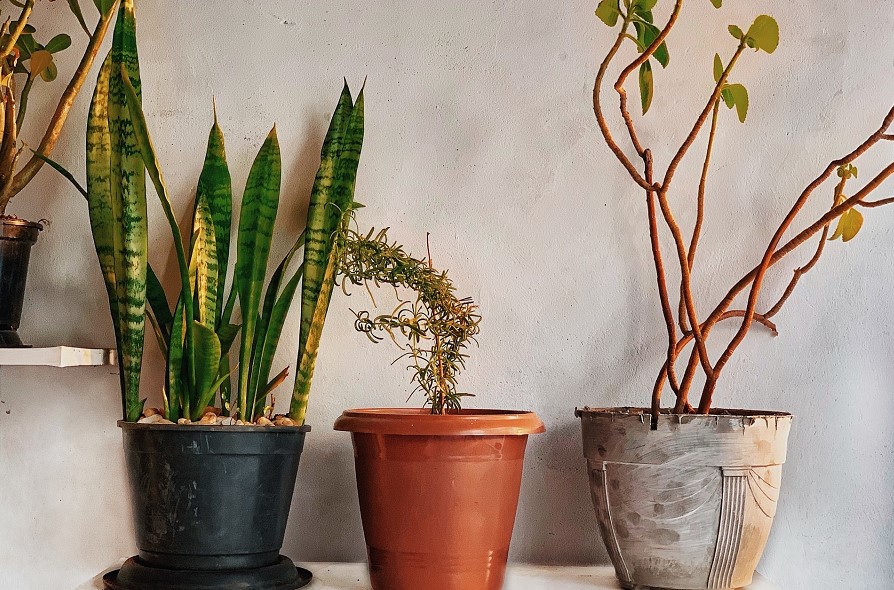
What to do with leaves that have died?
If dead leaves were seen in the bushes, they should be cut off immediately.
Otherwise, parasites and infections will develop here, which can provoke the death of the entire bush.
To remove a dead leaf, cut it at the base.
You need to work with sharp tools that have previously been disinfected.
How often should a snake plant be watered?
Watering should be done only after the soil has dried. It is difficult to give exact dates because everything depends on the size of the tank, soil, and environmental parameters. On average, watering is carried out at intervals of 1-2 weeks. In winter, you can water the bushes once a month.
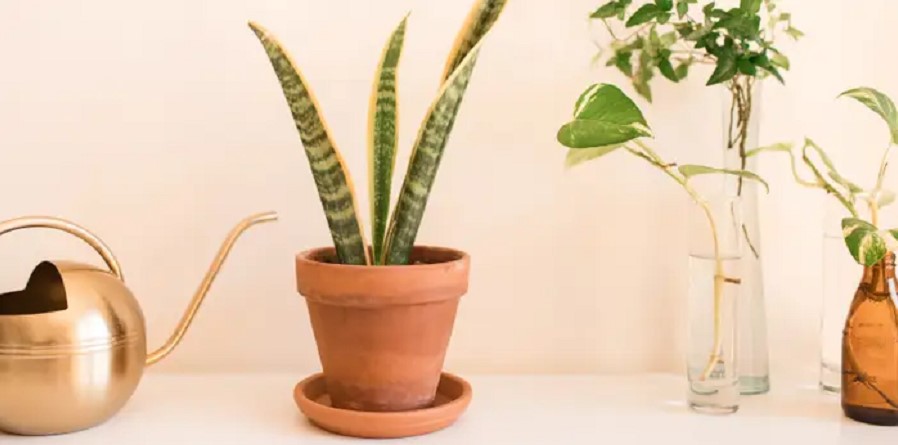
Results
As you can see, there are many reasons for the yellowness of leaves in snake plants. Most of them are caused by improper care. If you follow all the rules for caring for crops, you can prevent such phenomena.
- Why Are There Still No Tomatoes in My Tomato Plants? Let’s Fix the Issue! - July 13, 2023
- Water Propagation White Stuff on Roots: Everything You Should Know! - July 11, 2023
- String of Dolphins Drying Up: Solved! - July 11, 2023
